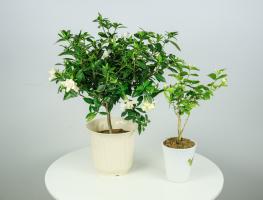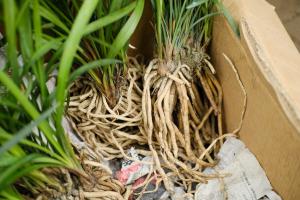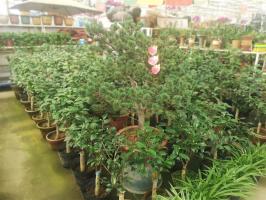Introduction
Jasmine is a popular flowering plant that can enhance any garden or living space with its sweet fragrance and delicate blooms. However, many plant enthusiasts wonder if jasmine is good for outdoor potted plants, and if it is a suitable addition to their garden or patio. In this article, we will explore the benefits and drawbacks of growing jasmine in outdoor containers, as well as provide tips for keeping your potted jasmine healthy and thriving.
The benefits of growing jasmine in outdoor containers
There are several advantages to growing jasmine in outdoor containers. Firstly, it allows gardeners to enjoy the beauty and fragrance of jasmine in smaller spaces or on balconies where there may not be enough room for an in-ground garden bed. Additionally, potted jasmine can be moved around to follow the sun, providing maximum exposure to sunlight and allowing for greater control of its growing conditions.
Furthermore, container-grown jasmine can be protected from cold weather by simply bringing it indoors during the winter months or moving it to a more sheltered location. Potted jasmine is also less susceptible to soil-borne diseases and pests, which can be a common problem when growing in-ground.
The drawbacks of growing jasmine in outdoor containers
Despite its many benefits, there are also a few drawbacks to growing jasmine in outdoor containers. One of the main challenges is maintaining the proper soil moisture levels, as potted plants can dry out quickly in hot weather or if not watered regularly.
Another issue to consider is the potential for root-bound plants, as potted jasmine can quickly outgrow its container if not given enough space to expand its root system. This can lead to stunted growth, lower flower production, and an overall decline in plant health.
Lastly, some jasmine varieties may be too vigorous for container growing, and may require frequent pruning or staking to prevent them from becoming too top-heavy and tipping over. It is important to choose a variety that is well-suited for potted growing, such as dwarf or compact varieties, to ensure the best success rate.
Tips for growing healthy outdoor potted jasmine
To ensure your potted jasmine thrives in an outdoor setting, there are several key factors to consider. Firstly, use a good-quality planting mix that is specifically designed for container gardening, as this will provide the necessary drainage and nutrients for your plant.
Next, choose a large enough container that allows your jasmine enough space to grow without becoming root-bound. As a general rule, the pot should be at least twice the size of the root ball. It is also important to ensure that the container has proper drainage holes to prevent root rot and other moisture-related issues.
Another important factor in growing outdoor potted jasmine is proper sunlight exposure. Jasmine requires at least six hours of direct sunlight per day to bloom and grow properly. However, it is important to avoid exposing the plant to too much direct sunlight during the hottest parts of the day, as this can overheat the soil and cause the plant to wilt or dry out quickly.
Lastly, always ensure that your potted jasmine is well-watered but not overwatered, as proper soil moisture is crucial in maintaining healthy plant growth. Water your jasmine deeply once or twice a week, depending on the weather conditions and moisture levels in the soil. With proper care, your outdoor potted jasmine can flourish and provide years of enjoyment and beauty.
Conclusion
In conclusion, growing jasmine in outdoor pots can be a great way to enjoy this fragrant and beautiful plant in smaller spaces or on balconies. While there are some challenges to growing potted jasmine, such as maintaining proper soil moisture and preventing root-bound plants, with the right care and attention, your jasmine can thrive and bloom for many years to come.

 how many times do yo...
how many times do yo... how many planted tre...
how many planted tre... how many pine trees ...
how many pine trees ... how many pecan trees...
how many pecan trees... how many plants comp...
how many plants comp... how many plants can ...
how many plants can ... how many plants and ...
how many plants and ... how many pepper plan...
how many pepper plan...
































